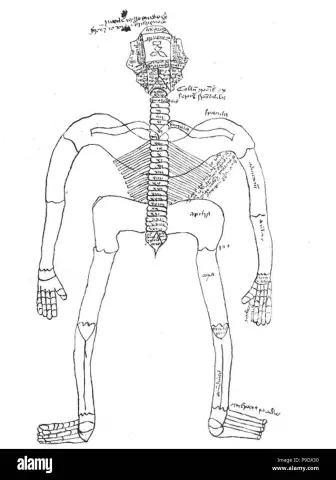- Author Rachel Wainwright [email protected].
- Public 2023-12-15 07:39.
- Last modified 2025-11-02 20:14.
Anatomical and physiological features of children

The child's body is in the development stage. Almost all of its systems: respiratory, cardiovascular, nervous, musculoskeletal, endocrine, etc., are in the stage of steady growth. Unlike an adult, a toddler, child, or teenager has completely different indicators that differ from each other over time. Age anatomical and physiological characteristics of children should be taken into account when diagnosing pathological conditions and diseases.
Differences in the structure and functioning of the human body during the growth and maturation period predetermine the difference in approaches to diagnosis and treatment. Therefore, in medicine there is a separate science - pediatrics, which is subdivided into several disciplines:
- Neonatology - deals with the treatment of newborns;
- Adolescent medicine - studies the maturation period of the human body.
Given the anatomical and physiological characteristics of children, almost all medical disciplines have a separate specialization, such as pediatric surgery, otolaryngology, dentistry, neurology, and so on.
The anatomical and physiological characteristics of children in pharmacology are most clearly seen. Medicines suitable for the treatment of adults are not always useful for children, therefore they are prohibited for use in pediatrics at certain age periods.
Anatomical and physiological features of the development of children
After birth, the height and weight of the baby increase almost exponentially. So, in the second year of life, one centimeter and 200-250 are added every month. By the third year of life, physical activity increases, which requires most of the energy. At this time, the maturation and formation of internal organs occurs. From the side of the musculoskeletal system, the anatomical and physiological features of the development of children consist in a fairly rapid ossification of cartilaginous tissues. First of all, the periosteum is subjected to ossification, therefore fractures in children are made according to the type of "twig", when the broken bone "hangs" on the whole periosteum. A child's fracture heals much faster than an adult's. The growth of the skeleton in humans continues until the age of 21.
The anatomical and physiological characteristics of children in adolescence lead to conditions that, although not the norm, do not cause serious concerns for the child's health. Recently, due to acceleration, the skeleton is growing much faster than several decades ago. Cases of sudden fainting spells in adolescents, especially males, are increasing. The anatomical and physiological characteristics of children of the present time serve as an explanation for such cases. When the growth of bone tissue occurs - physiological age-related traction - the vessels "do not have time" to germinate in such an amount to provide oxygen and nutrition to the muscle tissue. As nutrient consumption increases dramatically, oxygen supply to the brain is reduced, especially when the body is upright. As a result, the child faints. If something like this happens in an adult, it indicates a serious pathology.
An important role in a child in the development of certain conditions is played by the skin, the area of which in relation to the internal organs is much larger than that of an adult. And here the anatomical and physiological characteristics of children give rise in most cases to unfounded fears for the health of the child. The fact is that the subcutaneous tissue in a child is not sufficiently developed, since the growth processes do not involve fatty deposits. This feature gives rise to the development of diathesis and convulsions in febrile conditions.
In the first years of life, the child's neuromuscular system is in a state of hypertonicity, therefore, tendon reflexes are determined in the baby, which are considered pathological in an adult. It is also anatomical and physiological characteristics of children, which should not be confused with diseases of the nervous system.
The digestive system has been improving over the years. When feeding a child, the ability of the gastrointestinal tract to digest certain foods is taken into account. Only the eruption of all teeth indicates the readiness to eat "adult" foods that require a sufficient amount of bile juice and digestive enzymes.
Age anatomical and physiological characteristics of children

The age of children is divided into separate periods of life, and each of them has its own characteristics, both in anatomy and physiology:
- Infancy (from birth to one year of age). The development of the nervous system, in particular, the visual analyzer, is of greatest interest. The age anatomical and physiological characteristics of children are such that after birth until the second week of life, the child sees all objects upside down. Therefore, the gaze of a newborn is "floating", since it is difficult for a child to focus his vision, to "compare" an external picture with a visual analyzer of the higher nervous system;
- Early childhood (1-3 years). During this period, the anatomical and physiological characteristics of children consist in changing the internal environment of the body. Indicators of blood and urine tests are brought closer to adult norms. The endocrine glands begin to function. At this age, personality traits and congenital diseases are determined;
- Teenage years. Anatomical and physiological characteristics of children at this time are most pronounced in the appearance of secondary sexual characteristics. This age is characterized by the formation of abstract and analytical thinking.
When providing medical care, the anatomical and physiological characteristics of children are always taken into account, completely different approaches, tools and medicines are used.
Found a mistake in the text? Select it and press Ctrl + Enter.






